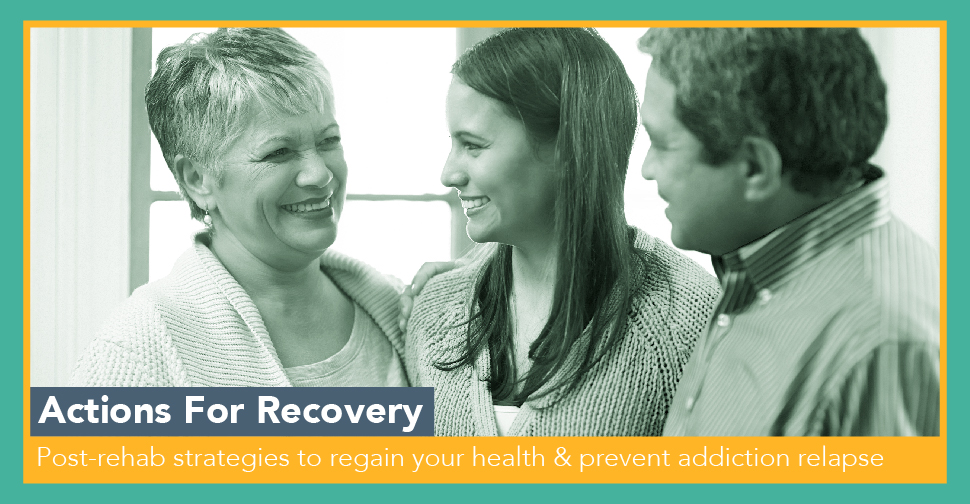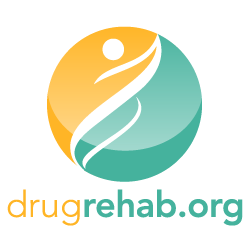
Building a healthy, drug-free life means embracing bold changes after rehab. You may need to quash deeply ingrained habits or form new friendships to sustain long-term recovery. It’s a lifelong journey, but you’ve already achieved critical milestones — getting expert help and acquiring new skills to free yourself from addiction.
To support your success, DrugRehab.org offers these evidence-based strategies for relapse prevention:
Boost Your Momentum with Aftercare
Research indicates the greatest potential for drug relapse is within the first 3-6 months following rehab treatment. You can strengthen your resolve with aftercare services. These post-rehab options — ranging from individual counseling to stress management classes and employment assistance — help you transition back into life and continue recovery.
A more intensive, and often effective option, is a sober living home. Your housemates in these interim residences share many of the same addiction challenges. Sober living homes typically require participants to attend 12-step meetings, abstain from alcohol and drugs, and comply with curfews and house rules such as paying rent and participating in chores.
A 2010 National Institutes of Health study found positive outcomes for residents of sober living homes — including reduced alcohol and drug use, arrests, and psychiatric symptoms when measured 18 months after their stay.
Tap the Power of Community
Reaffirm your commitment to recovery at regular support group meetings. Numerous scientific studies conclude that fellowship meetings are effective for long-term sobriety.
Options include both 12-step and secular, non-12-step programs:
- NARCOTICS ANONYMOUS
- ALCOHOLICS ANONYMOUS
- SMART RECOVERY
- WOMEN FOR SOBRIETY
- SECULAR ORGANIZATIONS FOR SOBRIETY
- LIFERING
Online support groups are available for many of these organizations, and you can share your struggles in person at local meetings (often held in churches or community centers). There’s clearly strength in numbers: for example, rates of abstinence are about twice as high among those who attend AA meetings (Kaskutas, 2009, Journal of Addictive Diseases).
Identify Your Triggers
Avoid temptation — and the potential for relapse — by knowing what triggers your substance use. That includes people and places that fueled your addiction. There’s a saying in Alcoholics Anonymous: “If you hang out in the barbershop, eventually you’ll get a haircut.” So steer clear of bars, dealers, paraphernalia etc., and learn techniques to control the stressors in your life. To cope with cravings and urges, you may wish to try a mindfulness practice such as urge surfing, or seek help from a cognitive behavioral therapist.
Build a Stable Support Network
Create a sober circle of friends and family who care about your recovery. They can warn you of relapse “red flags,” help you think rationally and hold you accountable for your actions. Make new friends at your clean living meetings and be each other’s support system. Avoid people who were part of your addiction, have their own drug problems or did not support your path to sobriety. Destructive patterns could trigger a relapse, so don’t derail your efforts as they evolve into a rewarding life.
Connect with Doctors And Counselors
The rehabilitation experts who guided your treatment can provide clear counsel for your ongoing recovery. Lean on those therapists and other healthcare professionals who make you feel comfortable; ask for their support when you’re vulnerable. These experts can help you retain and practice the skills you gained in rehab to live drug-free and set meaningful goals for your future.
Create New Daily Routines
Healing the addicted brain takes time for anyone in recovery. Start by treating your body right as you merge back into the realities of life. Nutrient-dense food, regular exercise and plenty of quality sleep are essential to eliminate negative physical and emotional states that could trigger relapse. So is learning to control the stressors in your life. Practice meditation or seek counseling for management of chronic stress. Take time to unwind at the end of the day and allow yourself the simple pleasures — reading a book, getting a massage, or taking a hot bath, for example — to build positive feelings and prevent relapse.
Add meaning to your life by finding a job, class or hobby that you love. Spend time with loved ones and engage with your community. Fill your days with purposeful activities that keep you satisfied — so you’ll never want to return to the way things were.
Use Relapse as a Learning Opportunity
If you do relapse, know that it’s treatable — and long-term recovery is possible. Today addiction experts view relapse not as a failure, but as a signal for renewed intervention. As a chronic disease, addiction is often characterized by relapse rates that are similar to other chronic illnesses such as Type I Diabetes. Each intervention can reduce the frequency and duration of addiction relapses, and improve your chances for long-term abstinence.
So learn all you can from a relapse and continue working on your recovery. Scrutinize the triggers or high-risk situations that led to backsliding. Plan ahead and rehearse these scenarios with a corrective course of action for the future. A behavioral therapist can help you develop coping strategies and an effective relapse prevention plan.
Celebrate Your New Life
Your personal growth is a direct result of replacing addictive behaviors with positive life changes. Focus on your success and savor the domino effect of recovery: a healthier brain and body, stronger relationships, greater resilience and a meaningful future.
Life in recovery has many benefits, according to a study published in 2013 by the advocacy group Faces & Voices. The national survey measured outcomes for 3,228 people in long-term recovery (the average active addiction was 18 years and more than half had been in recovery at least 10 years). Compared to when they had an active addiction, participants showed a 50 percent increase in steady employment, a ten-fold decrease in emergency room visits, a ten-fold decrease in illegal activities (DWIs, arrest, incarceration, etc.), a doubling of paying back personal debt and a 50 percent increase in participation in family activities. For more inspiration, go to: http://www.facesandvoicesofrecovery.org/
For More Information, Be Sure To Check Out These Additional Resources From DrugRehab.org:
- Year-Long Drug Rehab Programs
- How Long Has Addiction Been Classified As A Disease?
- Long Term Drug Rehab Centers and Extended Treatment
- Dealing With Anger Issues While In Recovery
- How Do I Get My Loved One Into Rehab?
- Rebuilding Your Relationship While In Recovery From Addiction


